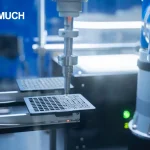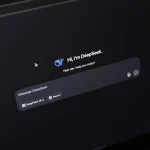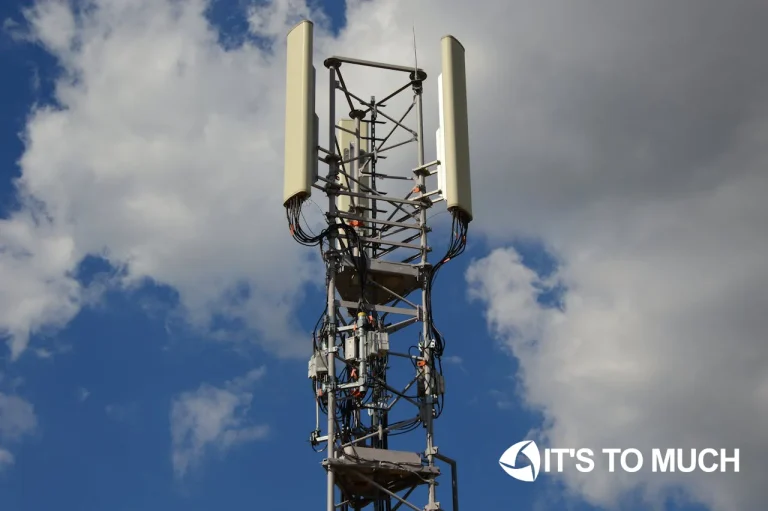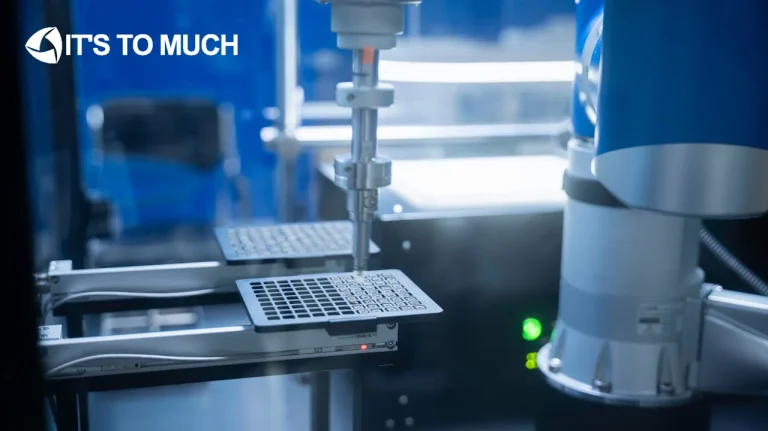
Why 2026 Will Be the Year of No-Code Development and Non-Developers
1. The Rise of the Zero-Code Era
Technology was previously only available to highly qualified programmers and developers. However, zero-code innovation fundamentally changed that regulation in 2026. With zero-code technologies, anyone can quickly create websites, apps, or automations. Drag-and-drop design replaces lengthy scripts, creating a new digital democracy. Software can now be created by businesses, developers, and independent contractors without any knowledge of grammar.
This revolution is breaking down barriers that once impeded technological and creative advancement. It’s not just convenience; it’s empowerment for all industries and professions. Instead of waiting for programmers, entrepreneurs now prototype ideas overnight. The zero-code age is a symbol of speed, creativity, and inclusivity in terms of technology. Creativity will officially surpass technological limitations in 2026. No-Code Development is transforming how businesses create apps without writing a single line of code.
2. From Coding to Creating: Redefining Digital Innovation
Coding has traditionally characterized innovation; zero-code, however, is redefining coding and innovation. Creativity is now the currency in innovation. Zero-code platform users can create simple, visual, and user-friendly software, just like the process of storytelling. Innovation progresses from technical complexity to agility in the market and UX. By eliminating the IT bottleneck, anyone with an idea can now build something of substance. This redefinition connects creativity and functionality more organically than past coding cultures had yielded. As ideas flow directly from the mind to the market, companies can adapt more quickly. While developers continue to play a vital role, they now shape innovation instead of stifling it. When using zero-code, every employee becomes a potential inventor. Zero-code creates innovation by facilitating an environment in which everyone’s creativity can drive that type of digital revolution in practice.
3. The Tools Powering the Movement
In 2026, a number of powerful platforms will be driving the zero-code revolution. Visual application development platforms and creative environments, such as Bubble, Webflow, Notion, and Glide, are leading the way. These applications are offering friendly ecosystems with integrations that combine automation, artificial intelligence, and modern design. The templates they’re offering are significantly decreasing development time. You can create more advanced applications, like analytics dashboards, marketplaces, and CRMs. It’s easy to integrate payment systems, databases, and APIs. Instead of writing code, you’re customizing logic through visual builders with no lines of code.These tools’ AI assistants bypass the model with automated thought recommendations on the best processes. This technology stack can make advanced development creatively accessible. Zero-code tools are the 21st-century digital infrastructure; they’re no longer a wild experiment.
4. Empowering Non-Developers: The Democratization of Tech
For many years, producing digital content required a lot of programming knowledge. This was turned upside down with the rise of zero-code tools, which allowed everyone to create! Nowadays small business owners, educators, and marketing managers create their own applications. This democratisation removes dependence on expensive external development teams and helps to bridge the gap between technical and creative minds. Talking about digital transformation no longer feels like an exclusive conversation for non-developers; it is about solutions based on an understanding of the real user. Ultimately we see increased diversity in the workplace and faster creativity. All employees now enjoy a digital advantage and also learn how to solve problems. In the end, zero-code technology realises the ultimate goal of widespread participation in technology.
5. Business Acceleration: Why Companies Love Zero-Code
Organizations leverage zero-code since it significantly reduces costs and speeds up execution. Zero-code builds are deployed in weeks now, while traditional app builds take months. Thanks to the speed of zero-code, organizations can quickly test and change their ideas. Workflow automation by departmental teams happens without IT departments needing to get involved. Startups used to spend four times as much to build their MVPs. Fast experimentation by enterprise teams increases agility, responsiveness and competitiveness. Zero-code platforms enable scalable cloud infrastructure to guarantee performance and reliability. Updates can happen without downtime of their complex systems, creating greater visibility of maintenance. Nowadays, organizations prioritize innovation, not just the technical urgency to put out a fire. Business agility is no longer a nice-to-have; it is a standard through the zero-code approach.
6. AI Meets Zero-Code: A Perfect Symbiosis
The use of artificial intelligence improves zero-code development significantly. Nowadays, AI enables users to create, debug, and optimize their programs more straightforwardly. Natural language prompts may produce entirely automated processes which designers and users can very efficiently create. AI takes input from users and converts ideas expressed in natural language into useful applications. With this relationship, even the most inexperienced users can link complex automation ideas. AI-enabled software will anticipate and resolve user intention, thereby simplifying the design and decision-making processes. According to the objectives contained within a project, it will also provide tailored template suggestions that provide more intelligent designs. AI-powered chatbots will assist users in efficient and timely resolution of a dilemma along logical or design lines. AI with zero-code development redefines what “rapid innovation” actually looks like, and the combination of both AI and zero-code is constructing a new reality for human-machine interaction.
7. Case Studies: Real-World Success Stories
Zero-code stories are changing the possibilities of what small teams can accomplish, regardless of the industry. A sole proprietor created a full online store using Webflow and Zapier. A nonprofit leverages Glide and Airtable interfaces to automate the management of donations. Healthcare organizations leverage zero-code to improve their patient communication systems. Educational institutions build tailored dashboards to analyze student engagement. Retail chains automate inventory adjustments, without a demanding IT support service in-house. Every single success story illustrates how accessibility amplifies both innovation and productivity. Organizations that used to need developers are now by the talents of no-code producers. This is building trust in self-built technical solutions globally. Zero-code is not a theoretical possibility; it’s making waves in the business world every day in real and measurable ways. Startups are embracing No-Code Development to reduce costs and speed up product launches.
8. Developers Aren’t Replaced—They’re Evolving
Zero-code reforms the role of developers and their purpose; it does not remove them. Developers are now building extensions, frameworks, and APIs for zero-code tools. They are focused less on repetition and more on system design, integration, and various implementations. This shift has resulted in developers moving from programmers to strategists and architects, as they are creating hybrid digital solutions with non-developers or technical creators. With zero-code, developers no longer carry out tedious tasks, thus they can be engaged in deeper innovation. Their experience guarantees the scalability, security, and deployment of new feature inventories. Each day, the alignment of engineering and creating is increasing. By 2026, developers are leading from enabling others to code rather than doing everything themselves. Zero-code evolution increases technically, creative know-how – or craftsmanship.
9. Education and the New Skill Economy
The educational landscape shifts when mastering zero-code becomes imperative. Schools introduce app-building modules using visual platforms rather than syntax-heavy code. Students develop digital portfolios, businesses, and prototypes prior to graduation. Employers now place greater value on problem-solving abilities and digital design literacy than they do on coding. In the new skill economy, knowing zero-code becomes crucial. The number of boot camps and online courses that train non-technical learners worldwide is increasing. This shift is increasing the diversity of the talent pool entering the digital workforce. Even painters and writers make dynamic websites that showcase their artistic creations. Learning now prioritises innovative thinking over technical memorisation. With zero-code education, anyone can become a digital innovator.
10. Challenges and Limitations of Zero-Code Platforms
Despite all the hype, zero-code technology has serious issues. Customisation that surpasses platform limitations often requires developer support. Deep integration in complicated enterprise systems still requires traditional coding. Problems with scalability and security arise when users develop untested workflows. Reliance on suppliers could limit the long-term flexibility of growing companies. The inability of some tools to export results in projects being stuck in proprietary ecosystems. However, ongoing innovation is addressing these issues bit by bit. Hybrid approaches, which combine zero-code and low-code, offer balanced solutions. For the responsible use of zero-code, awareness and training are still essential. Despite these limitations, its accessibility far outweighs the temporary ones.
11. The Future of Work in a Zero-Code World
Workplace culture changes dramatically as zero-code redefines productivity. Roles shift from implementation to conceptualisation in a variety of businesses. Employees become competent innovators who automate their own tasks. Increased cross-departmental collaboration results from the blurring of the lines between creativity and technology. For clients worldwide, independent contractors build entire digital ecosystems. Organisations promote autonomy by allowing zero-code access for the entire company. This empowerment encourages faster experimentation and higher levels of job satisfaction. Project timelines are becoming shorter, but innovation is happening more frequently. Half of the workforce in 2026 will have a technical mindset, and the other half will be creative. In the workplace, zero-code transforms from a technology to an attitude of empowerment.
12. The Road Ahead: A New Digital Renaissance
In 2026, No-Code Development will empower non-developers to innovate faster than ever. Zero-code signifies a radical shift in how people and technology collaborate. It puts speed, creativity, and ease of use ahead of complexity and command. By 2026, the global creator population will include millions of non-developers. Businesses innovate faster, communities collaborate more widely, and technology feels more human. The digital divide narrows as code barriers are permanently replaced by creativity. A modern digital renaissance commences with this shift. Now, any idea, no matter how small, has the potential to become a feasible reality. Beyond just technologies, zero-code changes people’s perspectives everywhere. It democratises progress and turns innovation into scalable action. The future will undoubtedly belong to those who dare to build without boundaries.
Conclusion: A Future Built by Everyone
The zero-code revolution is not merely a technological trend; it is a cultural awakening. In 2026, innovation will be fuelled by thinkers, visionaries, and creators rather than just developers. Zero-code tools have permanently removed the obstacles that stand between ideas and implementation. They have made creativity a universal skill and innovation a daily occurrence. These days, businesses grow faster and people accomplish more with fewer technological barriers. The future of tech belongs to No-Code Development, where ideas turn into apps instantly. Developers turn into mentors, who in turn mentor a new generation of digital builders worldwide. This movement redefines progress through innovation, accessibility, and inclusivity.
When technology becomes simpler, human ingenuity becomes more powerful than ever. Instead of waiting for programmers, the world is now created cooperatively, freely, and fearlessly. Everyone, not just developers, is writing the future now that it has arrived.

I’m a passionate blogger and senior website developer with an MPhil in Computer Science, blending technical expertise with a deep appreciation for the art of storytelling. With advanced knowledge of English literature, I craft content that bridges creativity and technology, offering readers valuable insights and engaging narratives. Whether building dynamic websites or exploring thought-provoking ideas through my blog, I’m driven by a commitment to innovation, clarity, and impactful communication.









